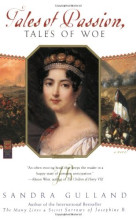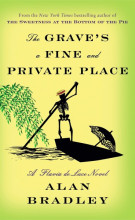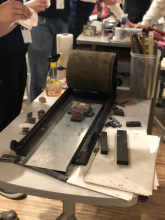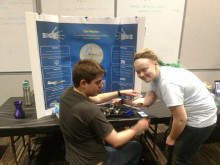Val Waldron
Library Blogs
Showing 791 - 800 of 1968 items

Interested in creating adaptive and accessible video game technology? Looking to learn which video games are the best of the best when it comes to accessibility? Just looking to game? The library is hosting two accessible and adaptive gaming events in April! The CVGA is also working to add more accessible and adaptive gaming equipment to its collection.

This is the second in Sandra Gulland's trilogy about the Empress Josephine, wife of Napoleon, following The Many Lives and Secret Sorrows of Josephine B., which I reviewed previously. This novel covers the years 1796-1800, which are full of momentous events in Napoleon's life, including his victories in Italy, his Egyptian campaign, and his seizure of power in a coup d'état. Josephine suffers from the hostility of Napoleon's family and her inability to conceive a child by him.

Join us Thursday, 4 April for a public lecture with conservator and researcher Cheryl Porter! Refreshments will be served.
•
Unlike some of my peers at the Design Lab and in the School of Information, I am not by default a very visually-oriented person when it comes to thinking, learning, or expressing myself. In order to engage with this perspective a bit more, I decided to attend a Visual Thinking Seminar facilitated by a UMSI alumnus, Katie McCurdy. Specifically, the seminar was about “drawing for meaning” -- drawing as a thinking aid, a problem solving strategy, and a communication style. This was referred to as a “functional” drawing, as opposed to an artistic drawing.

BLUElab Thailand unites students from multiple disciplines at the University of Michigan in pursuit of creating sustainable solutions for flood mitigation in our partner district of Mae Chan, Thailand with the collaboration of Chiang Mai University students and faculty in the PURPLElab organization as well as Michigan-based supporters such as BLUElab, the Center for Socially-Engaged Design and University of Michigan faculty.
Our ultimate goal is to create viable, sustainable solutions that satisfies two specific flood-related needs of the Mae Chan community. Currently, we are in the process of creating and selecting designs. We are translating these designs into physical concepts and prototypes, testing them with our newly built pipe-simulation test rig.
Our ultimate goal is to create viable, sustainable solutions that satisfies two specific flood-related needs of the Mae Chan community. Currently, we are in the process of creating and selecting designs. We are translating these designs into physical concepts and prototypes, testing them with our newly built pipe-simulation test rig.

Jeff Witt, Diversity and Incusion Specialist, reflects on what success looks like in relation to his DEIA and Social Justice work.

In the latest entry in Alan Bradley's mystery series featuring twelve-year-old chemistry genius Flavia de Luce, Flavia finds the body of a murdered man in the river. It turns out he is the son of a vicar who was hanged for the murder of three of his female parishioners. But was the vicar really innocent?
![Spine and front cover of Gulielmus Durandus (ca. 1230-1296) et alii. [Tractatus varii] Paper. Germany 15th c.](/sites/default/files/styles/medium/public/chainbinding.jpg?itok=jTMtwzS6)
We are pleased to announce the launching of our most recent Omeka exhibit: Marks in Books. In this online exhibit, the term "marks" refers to physical elements that have been added to manuscripts and early printed books throughout time, that is, from the instance when they were being made until they arrived to our shelves. Mostly, these marks were not intended by the authors, scribes and printers as they originally envisioned their books, but were later included in the form of corrections, readers' marginalia, drawings, and traces of subsequent ownerships as shown in bookplates and bindings. These marks are extraordinary witnesses offering unique information on various aspects of book history such as production, textual transmission, reception, and provenance history.

For the third year in a row, the Shapiro Design Lab and the Library Student Engagement Ambassadors hosted a Valentine’s Day event with the Design Lab’s printing press. Students and staff from across the campus came to Shapiro Undergraduate Library the day before Valentine’s Day to make cards for their loved ones and drink hot chocolate.

On February 7th, the Shapiro Design Lab and the University of Michigan Prosthetics Club participated in the Emerson School Science Fair. Emerson School is a private K-8 institution with a dedicated staff and over 150 students. The theme for the science fair was "Problem Solvers: Using the Design Thinking Process to Find Solutions for Everyday Problems." Of the 150 students, the majority of them participated in the Fair. Projects ranged from 3rd grade mechanical card dealers, to a student in the 8th grade that created an AI that mapped cities for disaster relief. The Science Fair stretched from the school gym, through the halls, and into the large auditorium. The large auditorium is where the Shapiro Design Lab found itself tabling.